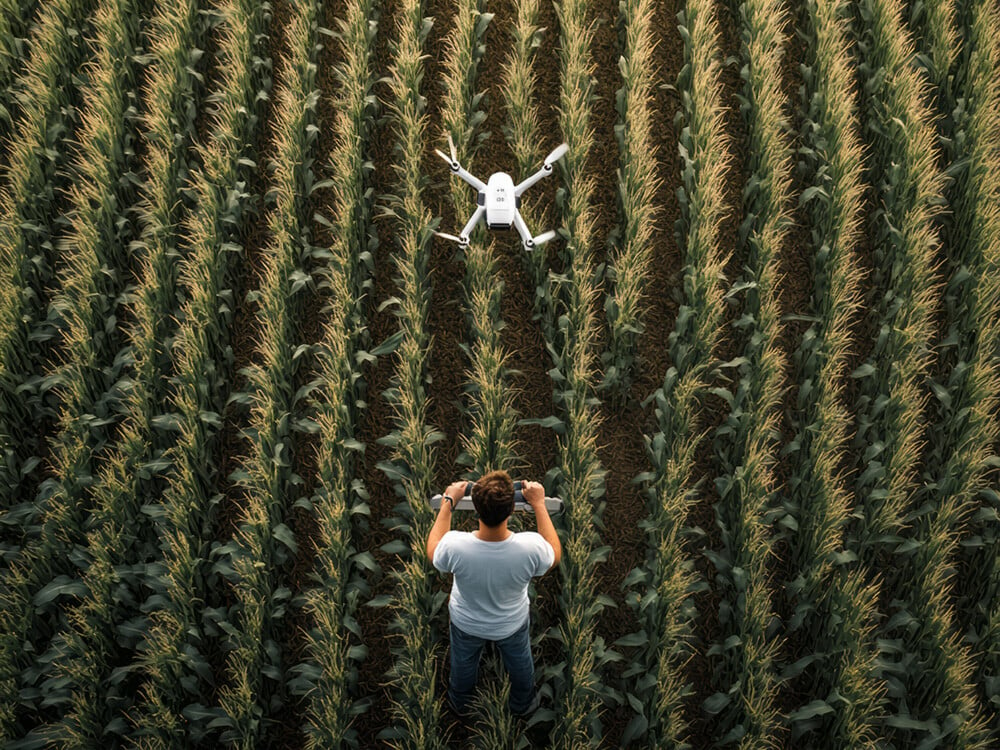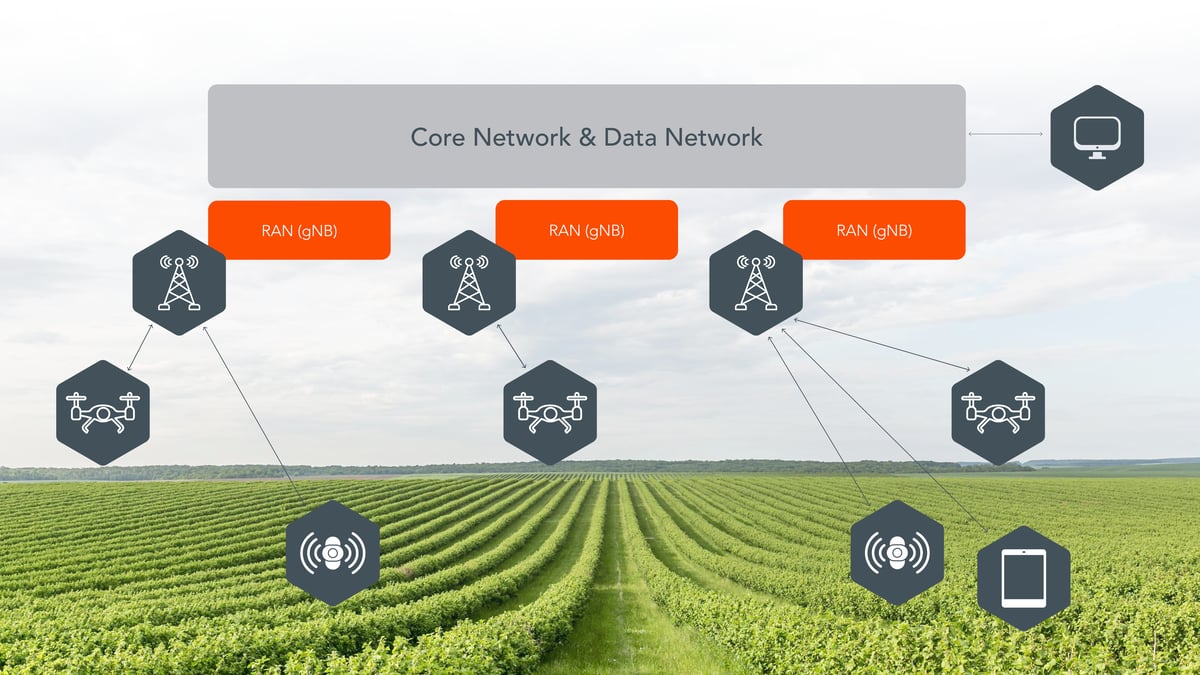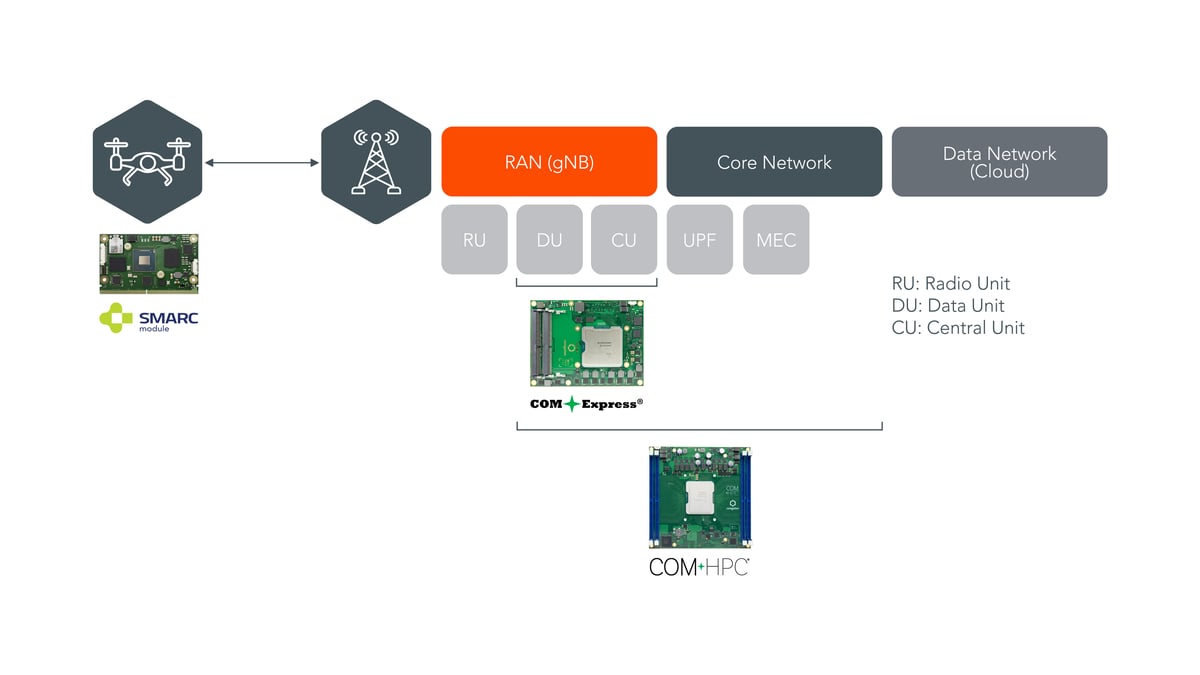How Computer-on-Modules Can Empower Agriculture
During my summer vacation, I cycled 20 kilometers through a rural region in Japan known for its vast rice culture. Along the way, I saw a drone spraying insecticide on a rice crop. It was operated by a farmer using a remote controller, who stood about 30 meters from the drone. This experience made me realize the potential for congatec to enhance productivity in the agricultural industry



Challenges farmers face when using remote-controlled drones
While drones significantly reduce the workload for farmers, several challenges remain:
- Labor shortage:
During my 20 km ride, I passed through a landscape where over 80% of the area was dedicated to rice fields, yet I saw very few farmers. A single farmer can operate only one drone at a time and cover only a limited area. As a result, it takes quite a while to treat an entire rice field. - Aging workforce in agriculture:
The average age of farmers in Japan is much higher than - for example - the average age of congatec employees. Many farmers are well past the age when we at congatec would retire. Even with the assistance of drones, managing the physical workload must be a challenge for them. - Risk of heat stroke:
Summers in Japan, including this region, are hot and humid, with temperatures often exceeding 35°C and humidity levels of 70%. I would feel dizzy after standing outside for just 30 minutes in these conditions. While local famers may be used to this climate, the risk of heat stroke remains, and they would surely prefer to limit the time spent outdoors.



Possible solutions to these challenges
To address these challenges, implementing wireless technologies to monitor and control devices remotely seems like a logical solution. There are various wireless options such as WiFi, Bluetooth, and LPWAN to consider. Out of them, 5G may be the most suitable, as it offers not only long-range coverage but also versatile services, enhanced Mobile Broadband (eMBB) for high bandwidth data transmission, Ultra-Reliable Low-Latency Communication (URLLC) for responsiveness with a low latency, and massive Machine-Type Communication (mMTC) for connecting large numbers of low-power devices, ensuring longer battery life.

A drone equipped with a camera could capture images and stream them over a 5G network using eMBB, allowing operators to monitor the drone’s location and the condition of a rice field remotely. Multiple drones could also be controlled simultaneously from a distance, with commands transmitted over 5G via URLLC to ensure real-time responsiveness. Additionally, various sensors could be deployed to monitor temperature, humidity, soil moisture, crop health, etc. These sensors would transmit data over 5G, enabling farmers to monitor conditions remotely. mMTC would be ideal for this, as it supports the infrequent transmission of small amounts of data from a large number of connected sensors, then batteries at sensors last for long time.
From these perspectives, 5G could play a key role in helping farmers overcome the challenges mentioned above.
To take advantage of 5G, farmers could establish their own private 5G infrastructure, separate from the public 5G services provided by telecom companies like Vodafone, T Mobile, NTT DoCoMo, and Softbank. Private 5G could be beneficial in the following situations:
- In areas where public 5G coverage is not yet available
- When exclusive infrastructure is needed for reasons related to security or bandwidth resources.
In such cases, the agricultural industry could also consider setting up its own private 5G infrastructure.
Integrating CoMs into agricultural drones
Computer-on-Modules (CoMs) offer broad scalability, making them a good fit for 5G services in the agricultural industry, both in terms of devices (drones) and infrastructure.

For drones operating as 5G devices, a small form factor with a low-power CPU is ideal for maximizing battery life. The SMARC standard is a suitable choice for this application as it supports camera interfaces. The CPU on a SMARC module can encode images captured by the drone’s cameras and transmit the data over 5G (requiring a 5G communication module on the carrier board).
On the infrastructure side, COM Express and COM-HPC (both server type) are potential candidates. COM Express would be appropriate for handling the Radio Access Network (RAN) above the radio unit (RU) processing. Its CPU is powerful enough to manage both data processing and control/application tasks for RAN. If higher CPU performance, greater network bandwidth, and increased memory capacity are required, COM-HPC would be a better option. It supports higher power consumption, additional memory slots, and more high-speed communication lanes for latest generation technologies. When the 5G infrastructure capacity is moderate, COM-HPC would also be capable of handling the Core Network, including User Plane Function (UPF) and Mobile Edge Computing (MEC).



